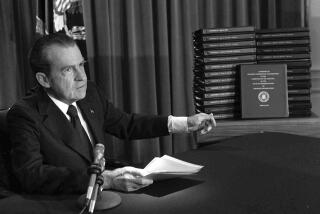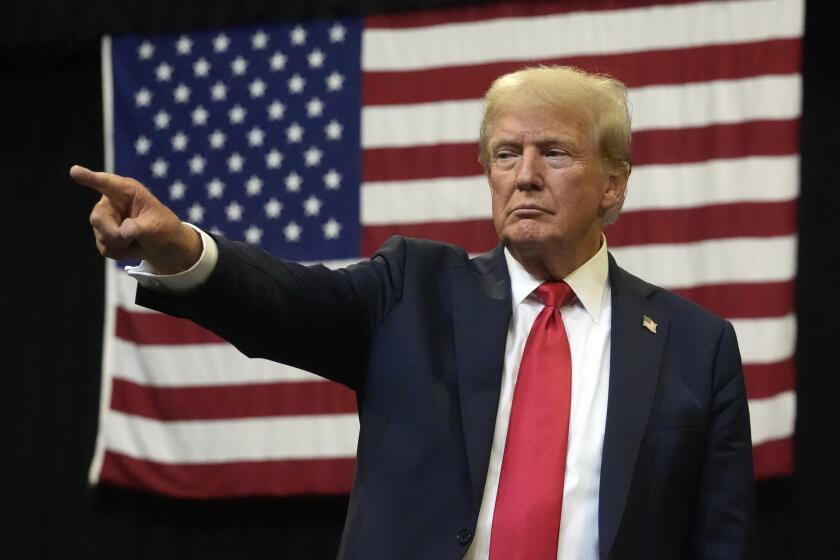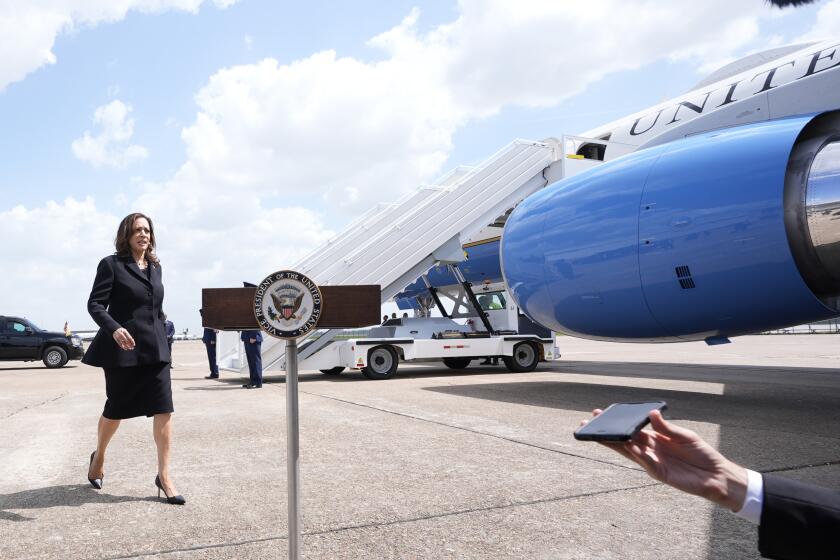Congress Begins Designing Bailout of Thrift Industry
Congress begins the delicate and complex task today of fashioning the biggest financial rescue in history, the bailout of the savings and loan industry, under the threat of a possible presidential veto if it tampers with key provisions of the plan proposed by the Bush Administration.
Treasury Secretary Nicholas F. Brady warned Wednesday that he will consider recommending that President Bush veto the bill if Congress weakens the Administration’s proposed tough new capital requirements for S&Ls; or if it includes the full cost of the rescue in the federal budget. Such actions, Brady told reporters, would be “terrible mistakes.”
But Congress is determined to put its own stamp on the legislation, which is necessary to raise the money needed to close or sell 500 insolvent institutions across the country and make good on federal insurance of individual deposits up to $100,000.
Shifting Cost to States
Members of a House Banking subcommittee have prepared 97 proposed amendments to the Bush plan, which would cost an estimated $157 billion over its first 10 years.
Among the amendments are proposals to require California and Texas, homes of the biggest S&L; failures, to pay some of the financial cleanup costs. However, these amendments do not appear to have majority support within the House Banking Committee.
Brady expressed greater concern Wednesday about proposals in Congress to postpone or dilute the requirement that S&Ls; maintain capital reserves equal to 6% of their assets beginning in 1991, compared to 3% now. Capital reserves consist largely of stockholders’ equity, retained earnings and cash; the assets are mostly loans.
Brady contended that the tougher capital requirement is essential to ensure that the S&L; crisis will “never happen again. If we give way on the capital part, we’re really asking for it.”
But the S&L; industry, while stripped of much of its political credibility by the present financial crisis, apparently retains enough influence to wage a determined battle against the tighter financial standard.
Sympathetic members of Congress have prepared amendments giving thrift institutions additional time to meet the stricter capital standards. Industry executives argue that as many as 1,000 of the nation’s solvent 3,000 S&Ls; could disappear because they would be unable to raise the additional funds necessary to meet the new standard.
Seeking a Clean Bill
Brady also warned that financing the S&L; bailout with a one-time, up-front appropriation, which would show up entirely on the federal budget, would “make a fool out of” the Gramm-Rudman deficit-reduction goals.
The Administration has recommended that much of the cost of the bailout be met through a $50-billion bond sale by a new government corporation, with only the annual interest costs appearing as part of the federal budget.
Senate Banking Committee Chairman Donald W. Riegle Jr. (D-Mich.) has proposed using direct federal financing instead, even though the full cost would immediately be part of the budget. The annual interest expenses would be an estimated $4.5 billion less over 30 years, he says, because the Treasury Department can borrow money more cheaply than the new government corporation could.
But Brady told reporters that the benefits would be more than offset because Riegle’s approach would swell the federal deficit, which in turn would boost prevailing interest rates.
Despite Brady’s warning of a possible veto, Congress does not seem prepared to swallow a so-called clean bill--the Administration’s proposal without change.
“What may be a clean deal for the regulators and the industry may well be a dirty deal for the public,” said House Banking Committee Chairman Henry B. Gonzalez (D-Tex.) “A clean bill, by my definition, is one that balances public costs with public benefits. Let’s have that kind of clean bill.”
Gonzalez has proposed several amendments that would make mortgage loans at subsidized low rates available for people with low and moderate incomes. He also wants to use vacant homes and apartments acquired from insolvent S&Ls; to help alleviate homelessness.
Also at issue in Congress will be the Administration’s proposal to jack up the fees paid by S&Ls; for their federal deposit insurance. The S&L; industry has enlisted Riegle’s support for requiring banks to pay as much as S&Ls; by the year 2000 for their federal insurance on deposits.
S&Ls; now pay an annual fee of $2.08 for every $1,000 in deposits, compared with bank payments of only 80 cents per $1,000. The Bush plan would narrow the gap by eventually bringing S&Ls; down to $1.80 and banks up to $1.50.
The premiums support the deposit insurance funds, which guarantee the safety of accounts up to $100,000. The insurance fund for banks is in strong financial shape, but the S&L; fund lacks the cash it will need to close crippled institutions and pay off their depositors.
The rescue effort proposed by the Administration would draw cash from the S&L; and bank industries and from taxpayers to buttress the insurance fund and dispose of insolvent S&Ls.;
More to Read
Get the L.A. Times Politics newsletter
Deeply reported insights into legislation, politics and policy from Sacramento, Washington and beyond. In your inbox three times per week.
You may occasionally receive promotional content from the Los Angeles Times.










